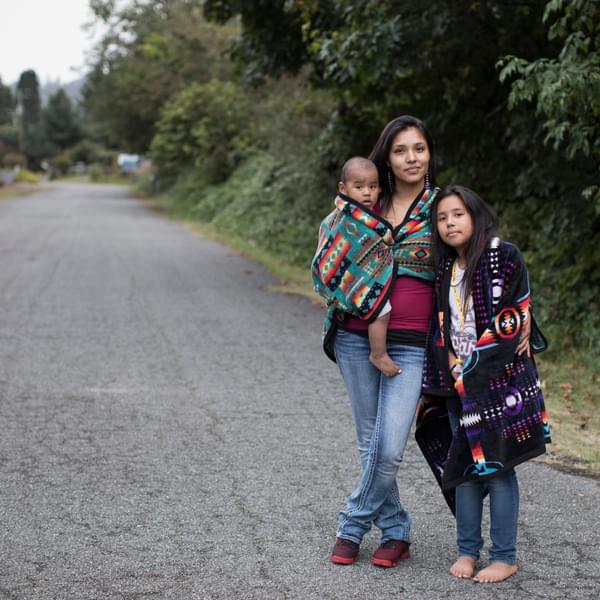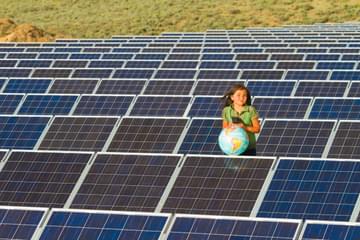Celebrating Indigenous Peoples' Day: Bridging Tradition and Sustainability
- Written by Lynn Belken
- October 14, 2024

As we celebrate Indigenous Peoples’ Day, it’s important to reflect on how energy efficiency can support and empower Indigenous communities. Indigenous peoples have long been stewards of the land, with a deep connection to nature and sustainability. Today, energy efficiency offers an opportunity to honor that legacy by addressing some of the challenges these communities face, particularly high energy costs and energy burden.
Indigenous communities, especially those in rural areas, often grapple with disproportionate energy challenges. Many reside in older homes that are less energy-efficient, resulting in higher utility bills and increased energy consumption. Black, Hispanic, Native American, and families residing in low-income multifamily housing, manufactured housing, and older buildings experience disproportionately high energy burdens. In fact, the energy burden of the average Tribal land resident is 28.3% higher than the average U.S. citizen.
The U.S. Department of Energy has recognized this disparity, allocating significant funding—$50 million—to improve clean energy technologies in these communities. Programs that target energy efficiency and renewable energy, like solar photovoltaic (PV) systems, are becoming critical tools in reducing energy costs while promoting environmental sustainability.
I recently had the opportunity to talk with Carla Vigue, Director of Tribal Relations at UW-Madison. Our conversation spanned topics ranging from Indigenous stewardship of natural resources to the role of universities in supporting energy equity initiatives. Join us as we explore how energy efficiency is shaping the future for Indigenous communities.
LB: How do high energy costs and energy burdens impact the daily lives of Indigenous peoples, and what steps can be taken to address these disparities?
CV: Indigenous peoples, like everyone else, are impacted by high energy costs, which can consume a significant portion of household income and leave less for essential needs.
I’ve spent much of my career working with and on behalf of Native communities, and we want our families to have access to good jobs, healthcare, and education. Affordable energy is a critical part of that. To address these disparities, solutions such as financial assistance programs, energy efficiency upgrades, access to renewable energy, and community engagement are important. Listening to elders, educators, community leaders, and parents about their concerns and what is happening in their communities is essential. By addressing disparities through community-driven solutions, we can work toward a more equitable energy future for Indigenous peoples.
LB: What are some of the key energy challenges that Indigenous communities in Wisconsin, and across the U.S., are facing today?
CV: Some rural Native communities in northern Wisconsin, in particular, face disparities due to weather conditions and their proximity to resources. Other Indigenous communities across the U.S. experience energy burdens from aging infrastructure, limited access to renewable energy, geographic isolation, and policy barriers. Addressing these issues necessitates targeted interventions, increased awareness, and tailored support for energy efficiency and renewable energy initiatives to meet their unique needs.
LB: How do Indigenous perspectives on sustainability and land stewardship align with modern energy efficiency and renewable energy efforts?
CV: Indigenous peoples have a deep connection to the land, air, and water, which is something we can all learn from. What is now called Wisconsin has been inhabited by and cared for by Indigenous people for more than 10,000 years.
I like to say that Indigenous people were the first scientists. To survive, they had to understand climate, agriculture, medicine, physics, and astrology. We call this place Mother Earth. Our families and communities cannot exist without her. We learn from her; she provides for us.
While progress is essential, it’s also vital to learn from our past and appreciate what our Indigenous ancestors understood. This means choosing sustainable ways to meet our needs while ensuring that Mother Earth is cared for. By integrating traditional ecological knowledge with modern practices, we can develop energy solutions that are not only efficient but also respectful of the natural world.
LB: What role do you see universities playing in supporting Indigenous-led energy projects or in advancing energy justice for these communities?
CV: Universities can play a pivotal role in supporting Indigenous-led energy projects and advancing energy justice. They have the resources, expertise, and capacity to collaborate with Indigenous communities to address their unique energy challenges. This collaboration can take many forms, including funding research, developing curricula, and fostering partnerships that empower Indigenous students and leaders to become advocates for their communities.
At UW-Madison, one of the world’s top research universities, we recognize not only our research capabilities but also the immense value of the traditional knowledge that Native Nations possess. Our goal is to work together toward the betterment of all involved. By engaging in community-driven projects that prioritize Indigenous knowledge and values, universities can help create innovative energy solutions that enhance energy efficiency while also respecting and preserving the cultural heritage and environmental stewardship of Indigenous peoples.

LB: How can educational institutions like UW-Madison empower the next generation of Indigenous leaders to drive energy efficiency and clean energy initiatives?
CV: As Director of Tribal Relations, I’m really proud of the collaborations we have established with the State’s tribes. These partnerships are designed to actively engage students, faculty, and staff in various projects that have a direct impact on clean water, sustainable forestry, climate resilience, agriculture, and more—each of which plays a crucial role in the broader conversation about energy efficiency and clean energy. These collaborations provide hands-on learning experiences for Indigenous students, empowering them with the skills and knowledge needed to lead energy initiatives in their communities.
LB: With funding from the U.S. Department of Energy aimed at advancing clean energy technology in Indigenous communities, what opportunities do you see for long-term positive impact?
CV: The Tribes have established goals for their housing, businesses, schools, and more. Integrating clean energy technology into these goals is not only beneficial but essential for building a strong economy and sustainable future for Indigenous communities. This funding can help develop renewable energy projects that alleviate energy burdens and empower Indigenous communities to lead their own initiatives, ensuring they are culturally relevant and tailored to local needs.
LB: How can we honor Indigenous Peoples' Day by elevating the voices and contributions of Indigenous leaders in the clean energy transition?
CV: On Indigenous Peoples’ Day, we have a unique opportunity to reflect on our country's history and honor its original people along with the sacrifices of our ancestors. As one elder friend reminded me, as I educate the community about Native history, it’s crucial to convey that we are people, not objects. We have stories to tell; we are families and friends, embodying the essence of the human spirit.
As we continue to accelerate the clean energy transition, we must ensure that Indigenous communities are included in this shift toward sustainability. Energy efficiency programs are one way to honor the wisdom and resilience of Indigenous peoples while addressing their unique energy needs.
By working together, we can create a future that reflects the values of sustainability and stewardship that Indigenous communities have practiced for generations. On this Indigenous Peoples’ Day, let’s commit to expanding energy solutions that are equitable, sustainable, and respectful of the deep connection Indigenous peoples have with Mother Earth.